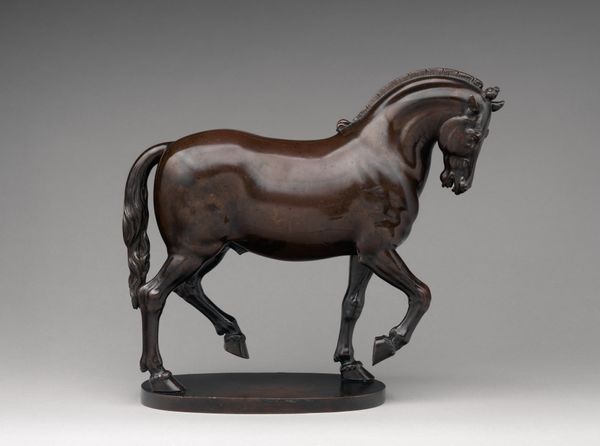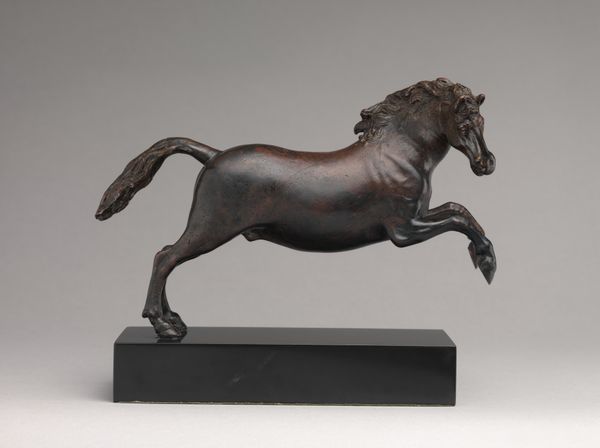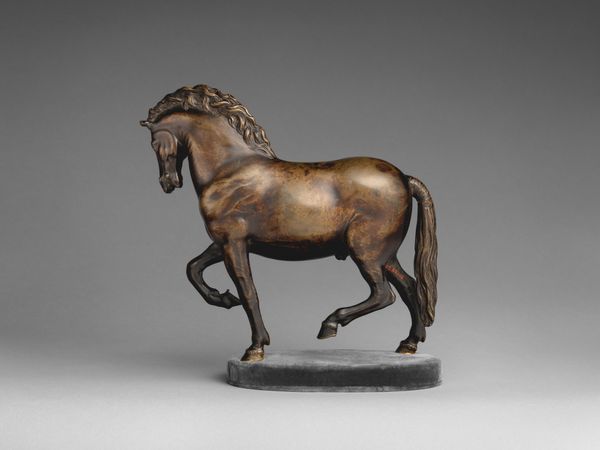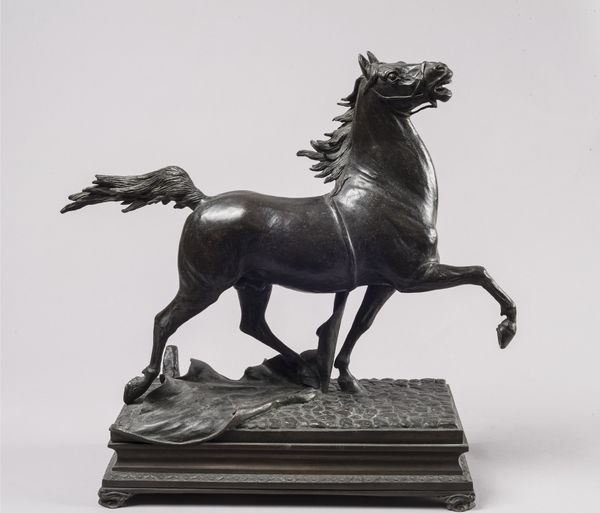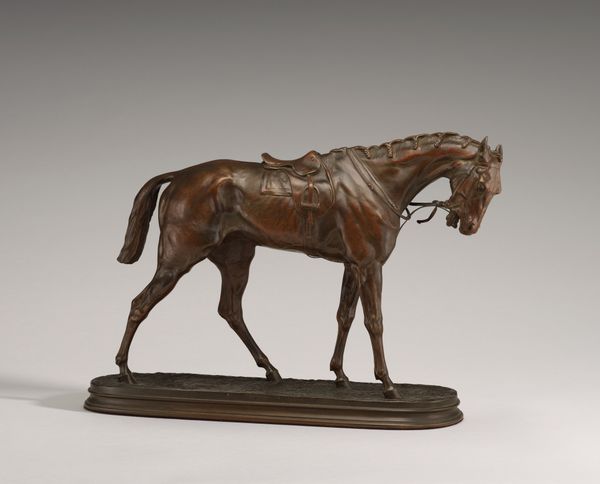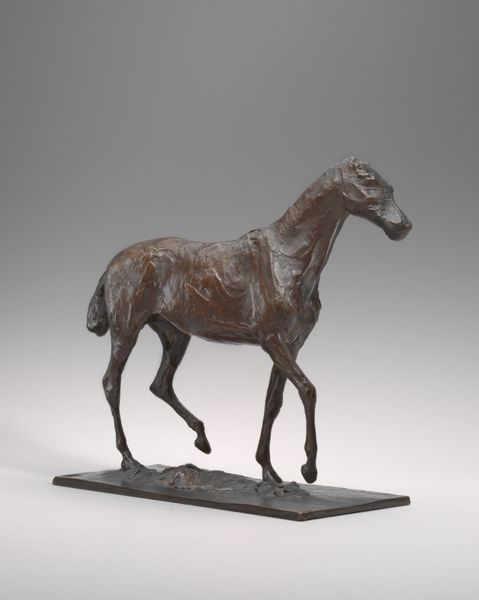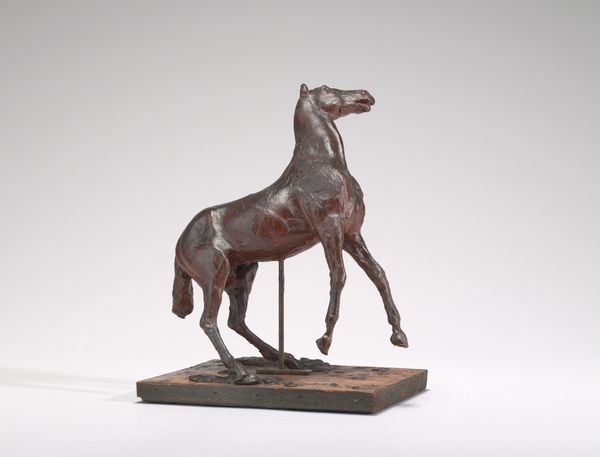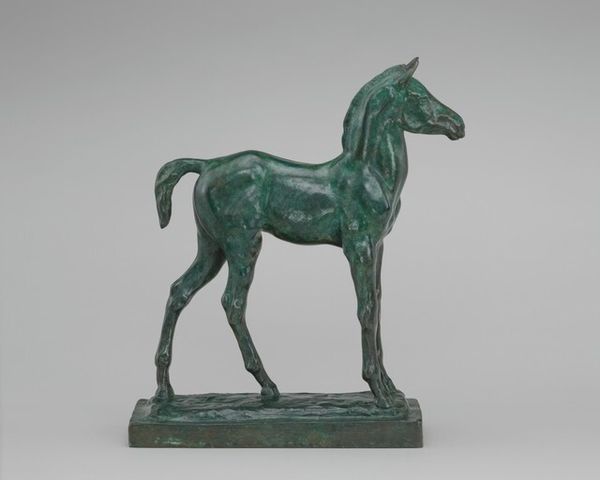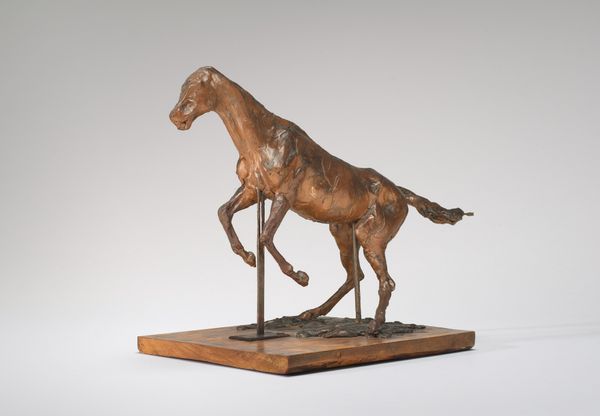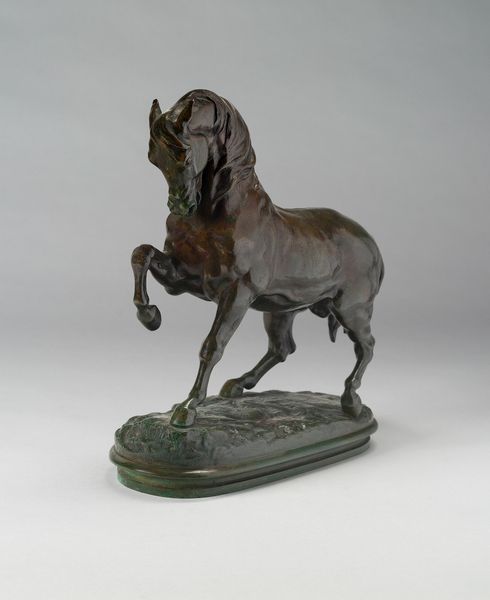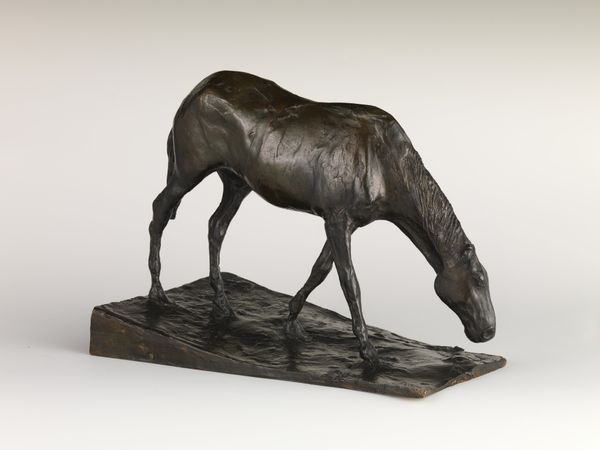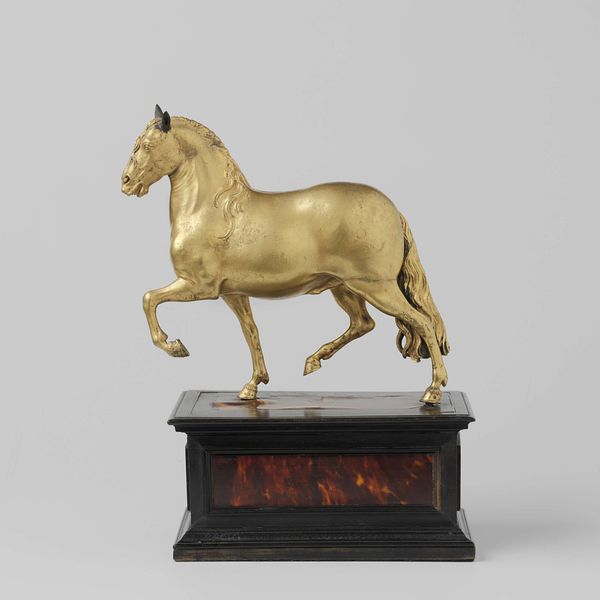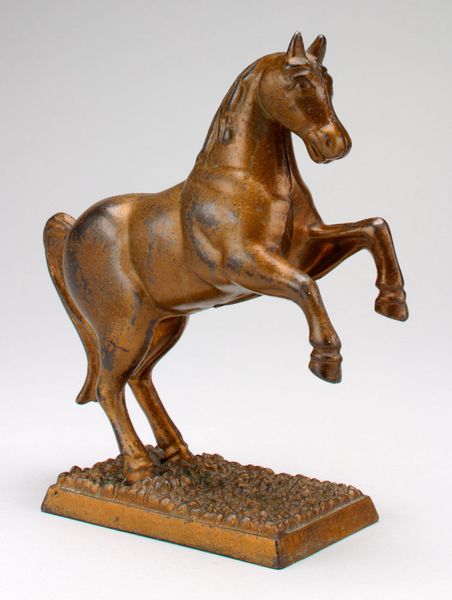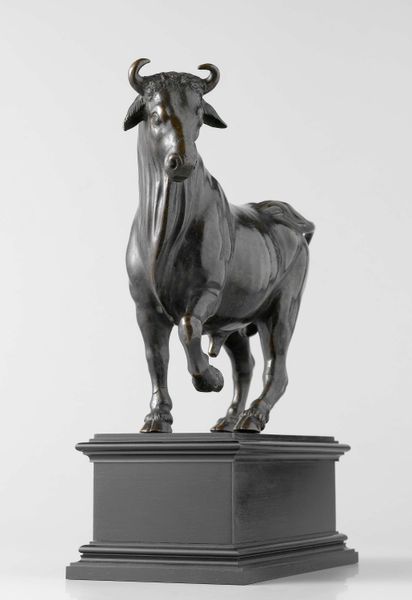
Dimensions: Overall (confirmed): 8 3/4 × 10 1/8 × 2 5/8 in. (22.2 × 25.7 × 6.7 cm)
Copyright: Public Domain
Editor: This bronze sculpture, "Horse," likely crafted in the 18th or 19th century and attributed to Giambologna, seems to radiate a poised, almost baroque elegance. The texture seems so smooth, what aspects of this work stand out to you? Curator: The immediate visual impact lies in its Mannerist elongation and attention to the horse's sinuous form. The sculptor has skillfully manipulated the bronze to capture a sense of controlled movement, highlighting the tension and grace in its pose. Notice the careful articulation of the musculature, emphasizing a stylized naturalism rather than strict anatomical accuracy. Editor: Stylized naturalism, that’s interesting. I am accustomed to considering the symbolism and purpose of equine artwork; yet, from a formalist point of view, should the subject become an arbitrary vessel? Curator: Not arbitrary, but subordinate to the formal qualities. The 'what' becomes less important than the 'how'. Observe how the light plays across the polished surfaces, creating a dynamic interplay of highlights and shadows. Consider also the composition itself; the relationship between the volume of the horse's body and the negative space created by its raised leg. Editor: It almost appears to exist in a vacuum, then; every feature, gesture, or curvature is of note because of where the artist wants you to go. With that, my perception has been completely subverted; the formal properties become not just an artistic approach but an indication of intentionality and design! Curator: Precisely! Appreciating the structure allows us to truly see how design shapes our response.
Comments
No comments
Be the first to comment and join the conversation on the ultimate creative platform.
